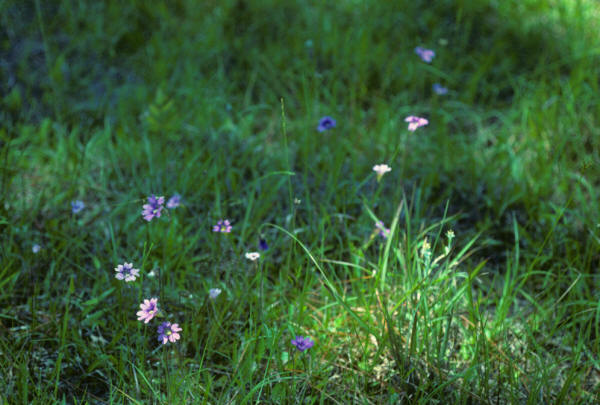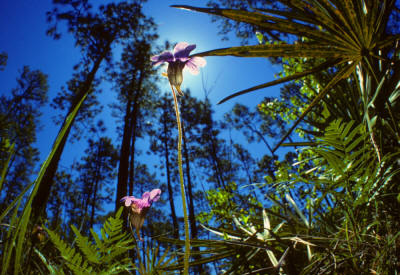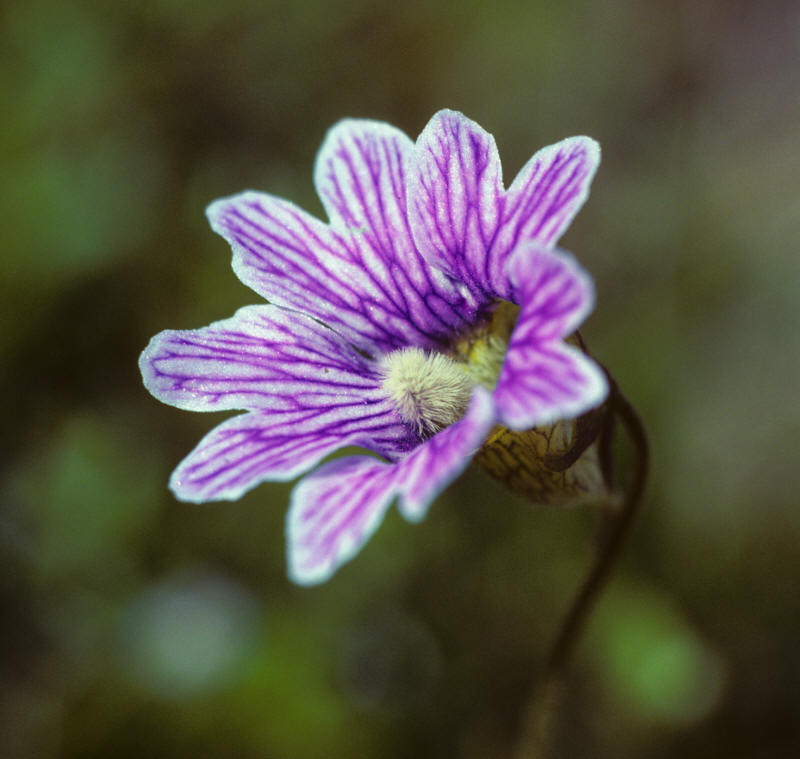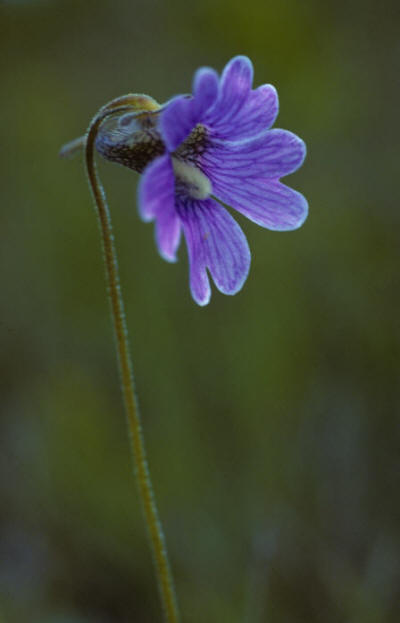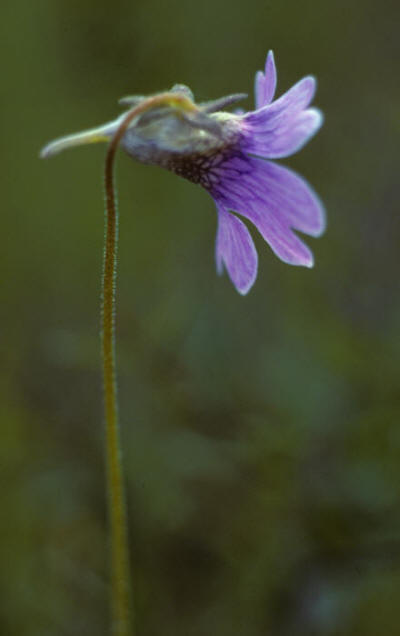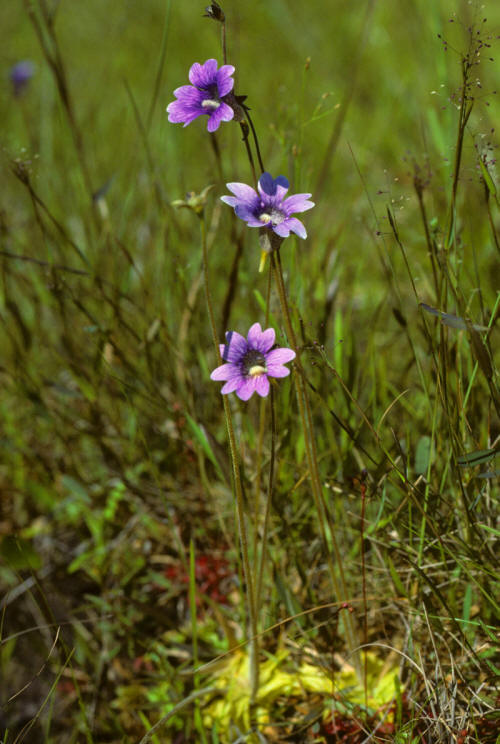|
Carnivorous Plants Story
|
||
|
|
Pinguicula caerulea This is a purple-flowered butterwort growing in the southeastern U.S. The distribution is similar to the yellow-flowered P. lutea. The vegetative part of the plant is practically indistinguishable without flower. The plant forms a light green rosette of leaves 5-10 cm across. The leaf edges are sharply rolled upward, making a narrow, pointed leaf. This butterwort produces a flower of strong-to-weak purplish color, sometimes the purple being so faint to the point of white. A tall scape (flower stem) often reaches 20 cm or more, supporting a single, somewhat dangling flower. Besides color, the flower shape is very similar between these two species. In the native southeastern coastal plani, P. lutea seems to flower a couple of weeks earlier than P. caerulea in mid-February. The rosette size as well as the scape height is slightly greater on P. lutea on average on the largest end. The flower size is similar (2-4 cm) and both bear very similar zygomorphic flower. Scapes are glandular and prominently pubiscent near the bas.
Blooming P. caerulea colony in the coastal savanna of Georgia. Grass-covered surface of the pine forest offers an ideal habitat for the plants. As seen in the pictures, the rosette is lightly covered with a grass.
Introduction Venus Flytrap Sundews Pitcher Plants Cobra Plant Butterworts Bladderworts
|
|
